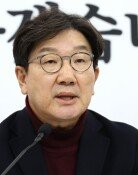Pyongyang seeks to paralyze Seoul’s reconnaissance capabilities
Pyongyang seeks to paralyze Seoul’s reconnaissance capabilities
Posted June. 23, 2018 08:00,
Updated June. 23, 2018 08:00
North Korea reportedly suggested at the June 14 inter-Korean meeting that the two sides’ reconnaissance activities be stopped within the areas of 60 kilometers from the military demarcation line (MDL). It also proposed to keep military aircraft out of areas 40 kilometers from the MDL. On the surface, the North’s suggestions seem to be aimed at easing tension and establishing peace at the frontline areas, but in fact, these are one of Pyongyang’s tactics to weaken the defense capabilities of South Korea and the United States.
The reconnaissance capability is one of Seoul’s key asymmetric forces, which is far more advanced than that of Pyongyang. The North has densely deployed its long-range artillery, missiles and soldiers around the MDL and the nearby area 40 to 90 kilometers away from line, but U.S. forces’ unmanned aerial vehicle (UAV) Global Hawk as well as U-2S reconnaissance aircraft, South Korean Air Force’s RF-16 aircraft and the corps of UAVs are closely monitoring North Korean troops’ every move. On the contrary, the North is hardly equipped with any reconnaissance assets, and it does not have an advanced warplane capable of conducting operations near the MDL. Therefore, making an area near the MDL free of military aircraft and reconnaissance activities will only benefit Pyongyang, covering the eyes and ears of South Korea and the U.S. troops.
Pyongyang appears to be trying to make the suggestions look like the part of action plans for the April 27 Panmunjom Declaration, with regard to the “suspension of hostile activities” and “turning the DMZ into a peace zone.” It is likely that the regime will continue to make similar proposals in the name of upholding the declaration. For example, the North is likely to call for the withdrawal of artillery and troops from an area with the high density of military confrontation, like in the case of the disarmament model used between the North Atlantic Treaty Organization (NATO) and the Warsaw Treaty Organization (WTO) when the Cold War was coming to an end. Some liberals of the South may also argue that the government should accept such a demand.
However, the situation at the MDL that divides the two Koreas is clearly different from that of Europe in the past. The distance between Panmunjom and Pyongyang is 215 kilometers, while Seoul is only 62 kilometers away from the truce village. Furthermore, more than 70 percent of the North’s artillery and troops are deployed between the MDL and the line that connects Pyongyang and Wonsan. Thus, scaling down some of its military assets at the front lines will not affect the North’s overall capability to make a surprise attack against South Korea’s capital area while the same decision will deal a serious blow to Seoul, whose military assets stand ready to preemptively counter Pyongyang’s attack.
For sure, tensions in the area near the MDL must be eased in the long run. Yet, the first step should be North Korea’s relocation of military artillery and troops to the rear. In particular, the North can by no means argue that its long-range artillery, which are threatening the lives and properties of 25 million citizens in the South’s capital area, is defensive in nature. Seoul and Washington’s military capabilities including reconnaissance activities near the MDL, which Pyongyang considers as an annoyance, are essentially for the purpose of defense. Defense capabilities should not be diminished along with launch capabilities, but after the actual removal of launch capabilities. Unless North Korea abandons its old tactics to use the Panmunjom Declaration to its own advantage, Kim Jong Un’s sincerity can be held suspicious.
Headline News
- Joint investigation headquarters asks Yoon to appear at the investigation office
- KDIC colonel: Cable ties and hoods to control NEC staff were prepared
- Results of real estate development diverged by accessibility to Gangnam
- New budget proposal reflecting Trump’s demand rejected
- Son Heung-min scores winning corner kick







